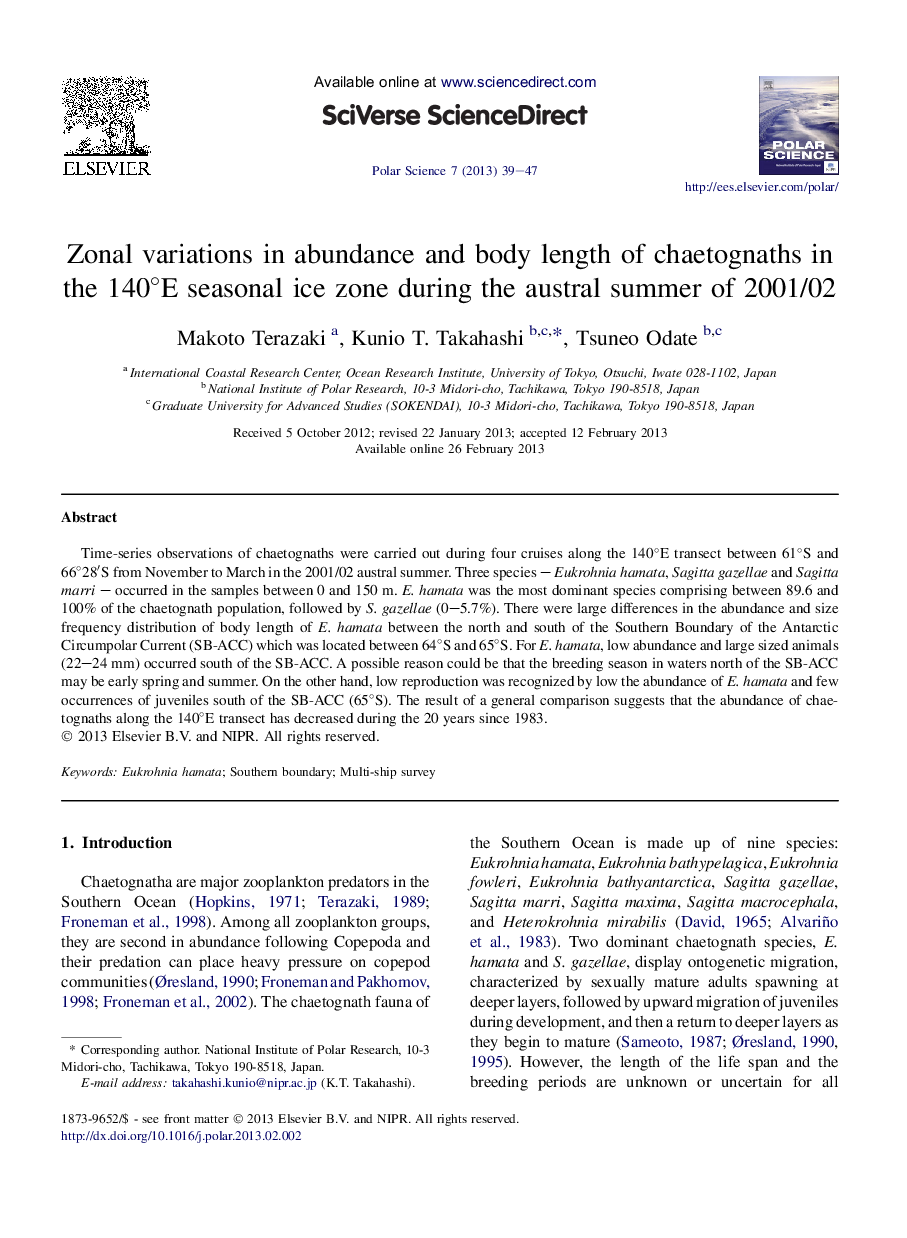| Article ID | Journal | Published Year | Pages | File Type |
|---|---|---|---|---|
| 4683223 | Polar Science | 2013 | 9 Pages |
Time-series observations of chaetognaths were carried out during four cruises along the 140°E transect between 61°S and 66°28′S from November to March in the 2001/02 austral summer. Three species – Eukrohnia hamata, Sagitta gazellae and Sagitta marri – occurred in the samples between 0 and 150 m. E. hamata was the most dominant species comprising between 89.6 and 100% of the chaetognath population, followed by S. gazellae (0–5.7%). There were large differences in the abundance and size frequency distribution of body length of E. hamata between the north and south of the Southern Boundary of the Antarctic Circumpolar Current (SB-ACC) which was located between 64°S and 65°S. For E. hamata, low abundance and large sized animals (22–24 mm) occurred south of the SB-ACC. A possible reason could be that the breeding season in waters north of the SB-ACC may be early spring and summer. On the other hand, low reproduction was recognized by low the abundance of E. hamata and few occurrences of juveniles south of the SB-ACC (65°S). The result of a general comparison suggests that the abundance of chaetognaths along the 140°E transect has decreased during the 20 years since 1983.
